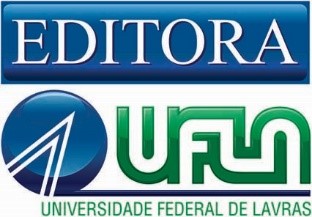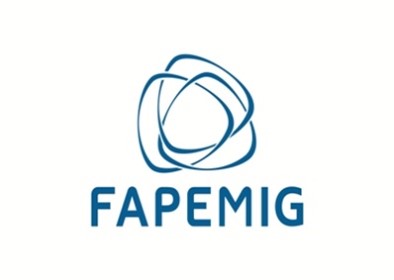|
Articles published in Ciência e Agrotecnologia cover research areas of Agricultural Science, Animal Science and Veterinary, Food Science and Technology, Agribusiness Economy and Administration, and Rural Engineering.
Submission of a manuscript to the journal requires that it has neither been published nor is under consideration for publication elsewhere. Concepts and affirmations included in articles are of the entire responsibility of the author(s).
If, for any reason, a conflict of interest is observed, the author(s) must inform the journal in a specific statement. Conflict of interest may occur when authors, reviewers, or editor show interests that may affect the preparation and evaluation of the manuscript.
The journal is published online in a continuous flow mode. Original research articles and reviews (by invitation only) are the main publication formats. Preprints (previously deposited at SciELO Preprints repository) may also be published. If the preprint is accepted for publication, it is the responsibility of the corresponding author to report the fact to the preprint repository.
Upon publication, authors maintain copyright of the article and the journal holds copyright as first publication. All journal´s content, except where identified, is licensed under a Creative Commons attribution-type BY (CC-BY) which allows unrestricted use, provided the original article is properly cited.
Ciência e Agrotecnologia follows a series of open science practices. The journal publishes under the Open Access model and therefore, articles are free for anyone to read, download, copy and disseminate for educational purposes. The journal also requires the indication of the role of each of the authors in articles with multiple authorship. The name of the editor is published in each article. Upon previous acceptance by the reviewer and author, the content of the reviewer suggestions might be open for access. All articles are assigned Digital Object Identifier (DOI) and all authors must be registered with Open Researcher and Contributor Identifier (ORCID) number.
The journal complies with the SciELO Guidelines Practices for Strengthening Ethics in Scientific Publication as well as the ethical principles of the Committee on Publication Ethics (COPE).
Publication process
Received manuscripts are forwarded to the editorial board to be initially evaluated in terms of comparative relevance to other manuscripts of the same research area that were submitted for publication. If considered as relevant, the manuscript is submitted to blind peer reviewers. If approved and if necessary, the manuscript may return to the correspondent author for corrections. If the corrections are not returned within the required deadline, the publication process will be automatically cancelled. Requested corrections not attended without justification may also lead to cancellation. In order to ensure the readability of the manuscript, a revision of the written English may be required and must be performed by any company indicated by the journal.
Manuscript submission
Manuscripts must be submitted online at https://www.scielo.br/j/cagro/
A cover letter, signed by all authors, must be sent to the Editor requesting the publication. It must contain author's full name with no abbreviations, and work address (institution, city, state, and country). At submission, this letter must be attached in the field "Cover Letter". Any further insertion, exclusion or alteration in the authorship must be agreed by all authors (including the excluded author, if the case).
Manuscripts must be written in English using US orthographic and grammatical rules and edited using the program Microsoft Word for Windows on paper size A4 (21 cm x 29.7 cm), double spaced using Times New Roman font, size 12, with a 2.5 cm margin on both left- and right-hand side, and on upper and lower margins, heading and footnote. It must be organized in sections as follows:
a) Title sufficiently clear; conspicuous and complete, without abbreviations and superfluous words, written in English and Portuguese. It is recommended to begin with the term that represents the most important aspect, with other terms in decreasing of importance; unless there is no common name, scientific names of most common plants and animals must not be used. Do not initiate with the words “effect”, “evaluation“ or “influence”.
b) Author(s) full name(s) without abbreviations on the right side with one name beneath the former with their respective Open Researcher and Contributor Identifier (ORCID) number and work address (institution, department, city, state, and country).
c) Abstract must be written continuously in one paragraph and it must not exceed 250 words. It must contain a brief introduction, objectives and main results; statistical design maybe mentioned only if it is the essential result of the developed research.
d) Index terms with 3 to 5 keywords that express the content of the paper and different from those used in the title and separated by semicolon (;).
e) Resumo (abstract translated to Portuguese).
f) Termos para indexação (index terms translated to Portuguese).
g) Introduction including literature review and objectives.
h) Material and Methods must be combined and not separated.
i) Results and Discussion must be combined and not separated. Tables and figures must be inserted in the text after their first citation.
j) Conclusion(s) must be written continuously in one paragraph stating the main result of the research and it must not exceed 80 words.
k) Author Contribution describes the individual engagement of authors within the research in terms of Conceptual idea, Methodology design, Data collection, Data analysis and interpretation, and Writing and editing. Each of these topics must be followed by the names(s) of contribution author(s) [e.g. Conceptual idea: Arrow, B.; Bartow, J.D.; Methodology design: Arrow, B.; Brawn, J.P.; Data collection: Arrow, B., Data analysis and interpretation: Brawn, J.P.; Stanfield, R.J., and Writing and editing: Arrow, B.; Brawn, J.P.; Stanfield, R.J.].
l) Acknowledgment(s) (optional, however, highly recommended) with serious and clear written style, indicating the reason(s) for the recognition(s).
m) References without citation of thesis, dissertation and/or abstracts.
Any submitted manuscript that does not follow this organization will be automatically cancelled.
|



